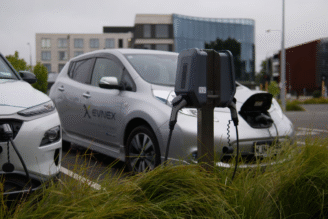Income-Verified Student Loans: How They Work and How to Apply in the US
Discover how income-verified student loans work in the US and learn how to apply even without a credit history or co signer.
How to apply for income verified student loans

Studying in the United States is a dream for many students, but the cost of higher education can be a major challenge. For those without access to traditional credit, income-verified student loans offer a more accessible and customized alternative. These loans are especially designed for students who don’t yet have a strong credit history or a co-signer.
They are offered by private financial institutions and nonprofit organizations focused on expanding access to education. The main feature of this type of loan is that approval depends more on current or projected income than on credit score. In other words, even without good credit, students may still qualify based on their potential to repay in the future.
How income verified student loans work
When applying for this kind of loan, students must prove their current income, whether it’s their own or from their parents or guardians.
This is typically done through pay stubs, tax returns, or bank statements. Lenders may also consider factors like the student’s chosen field of study, the university they’ll be attending, and post-graduation job prospects.
With this information, lenders evaluate the student’s potential to repay the loan. Instead of applying the same conditions to everyone, as with traditional loans, this model creates personalized plans.
Interest rates, repayment terms, and deferment periods can be adjusted to reflect each student’s financial reality.
In most cases, repayment begins only after graduation. Some models follow an income-driven repayment plan, where monthly payments are calculated based on the student’s actual income after entering the workforce. This helps prevent debt from becoming a burden early in a graduate’s career.
Advantages of this loan model
The main benefit of income-verified student loans is their accessibility. Students without a credit history or a qualifying co-signer can still qualify.
The model also offers greater financial security since repayment usually starts only after employment begins.
Another important advantage is the tailored conditions. Because the loan terms are adapted to each person, students may receive lower interest rates, longer repayment periods, and reduced risk of default.
Since payments are aligned with income, borrowers are less likely to struggle financially.
This loan structure also recognizes students’ future potential. By considering their academic program and career path, the model acknowledges that students with limited financial resources today may still be able to repay the loan successfully in the future.
Who benefits from income-verified loans
Income-verified student loans are ideal for students starting their academic journey without easy access to credit.
This includes students without a co-signer, from low- or middle-income families, or international students who haven’t yet built a credit history in the US.
Even those who have previously been denied other types of loans may find success with this model, thanks to its flexibility and case by case evaluation.
Since the model focuses on future financial viability rather than just present conditions, it opens more doors for those who are committed to pursuing higher education.
How to apply for an income verified student loan
The first step is to research institutions that offer this type of loan. Not all banks or lenders provide income-based student loans, so it’s important to look for those focused on financial inclusion or education support.
Once you’ve found suitable lenders, gather your documentation. You’ll typically need proof of income, a university acceptance letter, and personal identification.
Some institutions also allow you to run simulations before submitting the official application, helping you understand your potential terms and plan accordingly.
After submitting your application, there’s a review process that may take a few days or weeks. If approved, you’ll receive a contract outlining the terms of your loan.
Once signed, the funds are usually sent directly to the school to cover tuition, fees, and sometimes additional educational expenses.
Final considerations
Income-verified student loans are a smart and practical option for students who want to invest in their education but don’t meet the requirements for traditional credit.
With more flexibility, tailored analysis, and payment terms adjusted to real life situations, this model helps expand access to higher education and reduce financial inequality.
If you’re exploring ways to fund your studies without taking on unmanageable debt, this could be the right path.
Before making a decision, it’s worth speaking with your school’s financial aid office and comparing available options. With the right information and planning, you can pursue your degree with greater peace of mind and set the foundation for a successful future.





